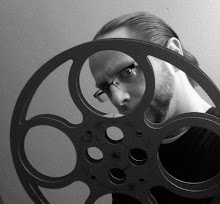Earlier this month, as explored by Reel Speak HERE, Disney
announced a new deal with IMAX which would put many of their major releases
onto the oversized screens. Not to be left behind, this week Warner Bros. inked
a similar deal, which would put nearly 30 of their upcoming slate of films into
the large-screen format.
The list of films from Warner Bros. to see a big-big-screen
release includes Ron Howard’s seafaring adventure IN THE HEART OF THE SEA, the
DC Comics films BATMAN V. SUPERMAN: DAWN OF JUSTICE, the Batman spinoff SUICIDE
SQUAD, Guy Ritchie’s KNIGHTS OF THE ROUNDTABLE, the Harry Potter spinoff
FANTASTIC BEASTS AND WHERE TO FIND THEM, Jon Favreau’s live-action adaptation
of THE JUNGLE BOOK, the sequel to THE LEGO MOVIE, and the sequel to GODZILLA.
The IMAX format has the ability to capture and display
images of far greater resolution and size than traditional film (35mm and
digital). In the past decade, many feature films have been upgraded into the
IMAX format. Looking at Warner Bros. interesting roster of films, it seems that
many of them would certainly benefit from being seen on a really big screen.
Ron Howard’s IN THE HEART OF SEA is a MOBY DICK-ish tale in which sailing ships
battle whales, so the large format would certainly bring the size and scope of
whales and the mighty sea to life. GODZILLA of course means everything is
bigger; there is perhaps no better way to watch the king of the monsters than
on a screen five stories high. And in DC Comics’ upcoming superhero matchup,
BATMAN V. SUPERMAN, director Zack Snyder has filmed certain scenes of the film
in the large IMAX format.
The rest of the films you have to wonder how they would
benefit from being made bigger. IMAX offers directors an opportunity to really
convey a sense of scale to the viewer, which is the very last thing that comes
to mind when thinking about Legos. Some movies do not benefit at all from being
enlarged, and studios just use the heftier price tag of an IMAX ticket as an
opportunity to bring in a bit more moolah.
While the business side of the minor renaissance IMAX is
going through is an easy one for studios, the opportunity for directors to
explore the big-ass screen is getting better. Ever since director Christopher
Nolan filmed more and more of his DARK KNIGHT trilogy in the large format,
engineers have been striving to make the large and clunky IMAX cameras more
portable and less of a monumental feat to take out on location. This is a great
step for the film industry, because if the IMAX format is to survive a label of
a gimmick (like goddamn 3D), then it needs to be done right. Directors need to
start filming in IMAX instead of just having their work blown up on an
oversized screen…where instead of looking at a beautifully framed shot which utilizes
its entire environment, you’re looking up a two-story high nostril.
It is important for audiences to know the difference between
a true IMAX screen and what cinema multiplexes try to pass off as IMAX (often
called LIE-MAX). While a LIE-MAX screen may still be
bigger than the five-story height of true IMAX, it is still bigger than the
standard screen in any given theatre. Audiences are often confused and don’t
know what they’re seeing, and the standard-issue laziness of the average
movie-goer won’t care enough to look into it. This Blogger begrudgingly is OK
with that, because any incentive to bring people to the big screens, where
movies are at their best, is a good one.



No comments:
Post a Comment
A few rules:
1. Personal attacks not tolerated.
2. Haters welcome, if you can justify it.
3. Swearing is goddamn OK.